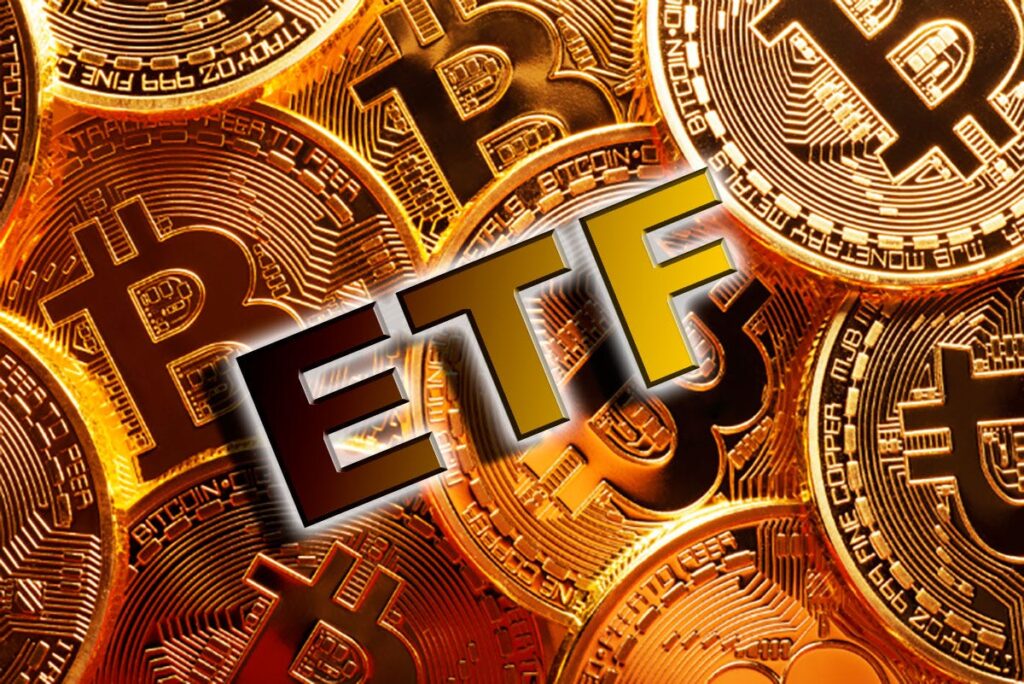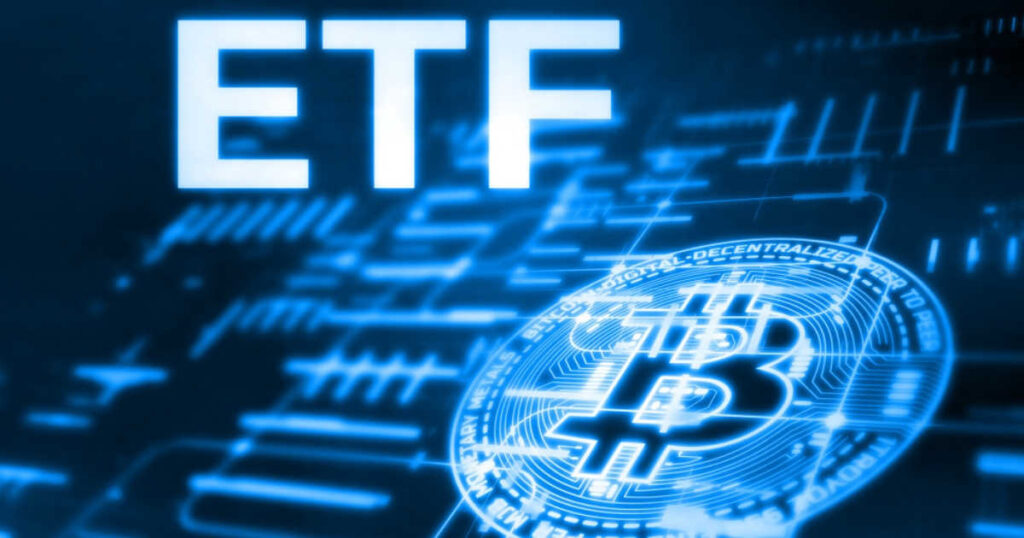The cryptocurrency market has always been known for its extreme volatility, with price swings that can sometimes feel erratic or unpredictable. However, as cryptocurrencies like Bitcoin and Ethereum have gained mainstream attention, institutional investors—large financial entities such as hedge funds, banks, and asset managers—are beginning to play a larger role in the market. One significant development that is reshaping the landscape of crypto trading is the approval and growth of cryptocurrency exchange-traded funds (ETFs).
ETFs have long been an essential part of traditional financial markets, offering retail and institutional investors an easy way to gain exposure to different asset classes without directly owning them. In the case of cryptocurrencies, ETFs are creating new pathways for institutional investors to engage with digital assets, without having to deal with the complexities and risks of directly holding crypto. While this move has undoubtedly helped mainstream the asset class, it is also having a significant impact on crypto market volatility. But how exactly are ETFs influencing this volatility, and what does it mean for the future of the crypto market?
What Are Crypto ETFs?

A cryptocurrency ETF is a financial product that tracks the price of a specific cryptocurrency, or a basket of cryptocurrencies, allowing investors to buy shares in the ETF, just like they would with stocks or traditional commodities like gold. These ETFs give investors exposure to the price movements of cryptocurrencies, but without the need to own or manage the underlying digital assets. In many cases, crypto ETFs are particularly attractive to institutional investors who prefer the regulatory framework and security that comes with traditional financial products.
There are two main types of crypto ETFs: spot ETFs and futures-based ETFs. A spot ETF directly tracks the price of the underlying cryptocurrency, such as Bitcoin, while a futures-based ETF is tied to Bitcoin futures contracts, which represent a bet on the future price of Bitcoin rather than its current spot price.
The Rise of Institutional Access to Crypto
The arrival of cryptocurrency ETFs has made it easier for institutional investors to access the market. Historically, institutional investors were hesitant to dive into cryptocurrencies due to concerns around market liquidity, regulation, and the technical complexity of crypto custody. However, ETFs provide a way for institutional investors to gain exposure to the asset class without having to deal with the headaches of private wallets, securing keys, or navigating cryptocurrency exchanges.
When institutions enter a market, they often bring with them large sums of capital and sophisticated trading strategies. This influx of institutional capital is a double-edged sword: while it can increase the liquidity and stability of the market, it can also amplify volatility, especially given the still relatively nascent nature of the cryptocurrency market.
Crypto ETFs and Market Volatility: The Two Sides of the Coin

While the rise of crypto ETFs is undoubtedly a step toward mainstream adoption, they also have the potential to influence the volatility of the crypto market. The question becomes: How does institutional access through ETFs affect the price stability of cryptocurrencies?
1. Increased Liquidity and Stability
One of the primary benefits of institutional involvement through ETFs is increased liquidity. In traditional financial markets, liquidity refers to the ease with which an asset can be bought or sold without affecting its price. When more institutional investors participate in the crypto space via ETFs, more capital flows into the market, which can help dampen some of the extreme price swings typically seen in the industry.
With more liquidity, the market becomes less prone to sudden, sharp fluctuations caused by relatively small retail trading activities. ETFs also allow for passive investment in cryptocurrencies, where institutional investors can hold positions without being actively involved in day-to-day trading, thus reducing the impact of speculative moves on the market.
2. Amplified Volatility: The Herding Effect
On the flip side, ETFs can contribute to amplified volatility in certain circumstances, especially in the short term. This is because institutional investors are typically more connected to global financial markets and may react to macroeconomic factors, news, or regulatory changes in ways that could trigger mass buying or selling of crypto assets.
Since the crypto market remains relatively young compared to traditional financial markets, it is still highly sensitive to external influences. For example, any major change in regulatory policy, such as the approval of a new ETF, or the announcement of institutional adoption by a large player, can lead to sharp price movements.
Moreover, ETFs could trigger herding behavior among institutional investors. When large institutions see other players gaining significant profits by investing in cryptocurrencies via ETFs, they may rush to follow suit, exacerbating price volatility. This could create a situation where the market behaves more like a traditional asset bubble, where prices rise sharply due to momentum, only to crash later when investor sentiment shifts.
3. Futures ETFs and Short-Term Price Movements
Futures-based ETFs are particularly susceptible to influencing short-term price volatility. These ETFs allow investors to speculate on the future price of Bitcoin (or other cryptocurrencies) without directly owning the asset. Since futures contracts are often used by institutional investors for short-term speculation, their presence in the market can lead to quick price swings based on changes in market sentiment or broader economic factors.
For example, when large investors or traders place a significant bet on the future price of Bitcoin, they can move the market in the short run—leading to price fluctuations that are more intense than what would occur with purely spot trading. This speculative element increases the potential for sharp ups and downs, contributing to a cycle of volatility.
4. Regulatory Uncertainty and Its Impact
Another important factor in how ETFs influence crypto volatility is the uncertainty surrounding regulation. While the approval of cryptocurrency ETFs is a positive sign of growing mainstream adoption, the regulatory landscape for digital assets remains unclear and highly variable across different jurisdictions. The announcement of new regulations—or the sudden change of existing ones—can create market turmoil.
For example, if regulators in major economies like the United States or the European Union were to impose stricter controls on crypto ETFs, it could lead to a significant sell-off or market correction. Conversely, positive regulatory announcements could trigger a rally, as institutional investors gain more confidence in the sustainability of the crypto market. These regulatory changes can lead to significant market movements, especially with the growing influence of ETFs on crypto trading.
The Bottom Line: A Changing Crypto Landscape
The arrival of cryptocurrency ETFs is undoubtedly transforming the crypto market, bringing institutional investors into the fold and opening up new avenues for exposure to digital assets. While these ETFs have the potential to bring greater liquidity and stability to the market, they also contribute to volatility, especially in the short term. The impact of institutional access through ETFs is a double-edged sword: it can enhance market depth and drive adoption, but it can also amplify price swings and speculative behavior.
Ultimately, the evolution of crypto volatility in the era of ETFs will depend on how both institutional and retail investors adapt to the changing landscape. As more institutional investors gain exposure through ETFs, the market will likely become more interconnected with the traditional financial system—leading to a more sophisticated, but also more complex, trading environment. For investors, understanding the ETF effect and its role in shaping crypto market dynamics will be key to navigating this brave new world.




Comments are closed